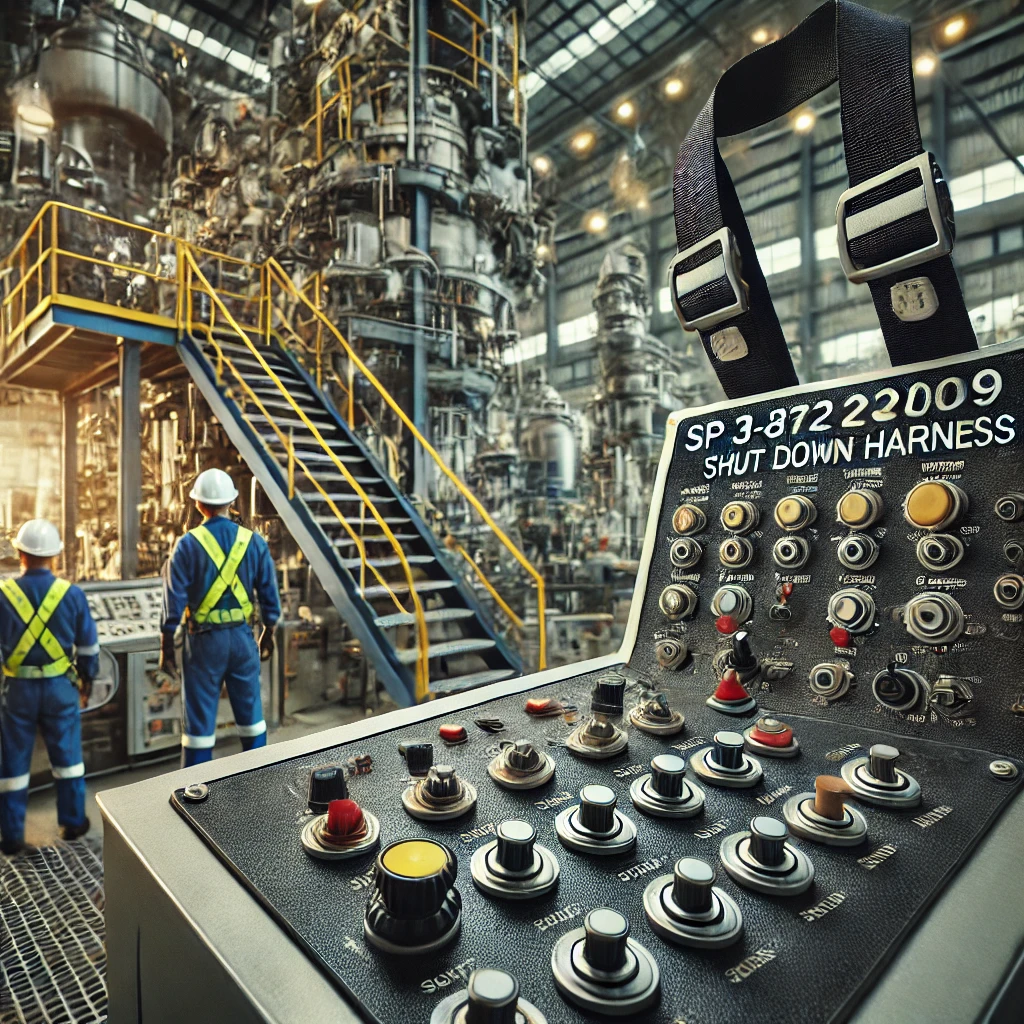In the landscape of industrial safety mechanisms, the SP 3-872-009 Shut Down Harness emerges as a pivotal tool, integral to maintaining operational integrity and worker safety across numerous sectors. This article provides a comprehensive look at the features, significance, and application of the ACTT Service Program’s SP 3-872-009 Shut Down Harness, underscoring its role as an indispensable component in emergency shutdown systems.
Introduction to SP 3-872-009 Shut Down Harness
The ACTT Service Program developed the SP 3-872-009 Shut Down Harness to perform a critical function within the safety protocols of industrial environments. Its primary purpose is to facilitate the immediate and safe shutdown of machinery and operations in the event of an emergency. This capability is not just a regulatory requirement in many industries but a necessary feature to prevent catastrophic failures and safeguard both personnel and assets.
SP 3-872-009 Shut Down Harness Design and Functionality
The design of the SP 3-872-009 harness focuses centrally on reliability and ease of integration. Importantly, it features a robust configuration that can endure the harsh conditions typically found in industrial settings, including extreme temperatures, vibrations, and exposure to corrosive substances. Moreover, high-quality, durable materials make up the harness, ensuring longevity and consistent performance.
Functionally, the shutdown harness operates as a critical component of larger control systems. Typically, the harness connects to emergency stop buttons or similar devices that operators can manually or automatically activate in response to specific hazardous conditions. Subsequently, upon activation, the harness sends an immediate signal to cease operations, thus initiating a series of pre-programmed responses designed to bring machinery and processes to a controlled stop.
SP 3-872-009 Shut Down Harness Key Applications
The versatility of the SP 3-872-009 Shut Down Harness allows its use across various industrial domains, including:
- Manufacturing: In assembly lines where the rapid stop of conveyor belts and robotic arms is necessary to prevent accidents.
- Energy Production: Particularly in oil and gas facilities, where the risk of fires or explosions can necessitate an immediate halt to operations.
- Chemical Processing: In plants where the mishandling of volatile chemicals could lead to dangerous reactions, requiring quick intervention.
Advantages of Implementing the SP 3-872-009 Harness
The integration of the SP 3-872-009 Shut Down Harness into industrial safety systems provides several benefits:
- Enhanced Safety: It reduces the risk of injury and damage by providing a reliable method for halting operations swiftly in an emergency.
- Regulatory Compliance: Strict safety standards govern many industries and mandate the availability of emergency shutdown mechanisms. The SP 3-872-009 harness helps ensure compliance with these regulations.
- Minimized Downtime: By preventing major accidents and the subsequent lengthy investigations and repairs, the harness significantly helps minimize downtime and maintain productivity.
Seamless Integration with Existing Systems
The 3-872-009 Shut Down Harness specifically targets seamless integration with existing industrial control systems, ensuring that the installation and synchronization with other safety components are straightforward and do not require extensive modifications. This integration capability is particularly crucial for industries that operate with legacy systems or those that cannot afford significant downtime for upgrades. Additionally, the harness connects via standard interfaces and communicates effectively with various types of machinery and control systems, making it an adaptable solution for numerous operational setups.
Maintenance and Reliability
One of the significant advantages of the SP 3-872-009 Shut Down Harness is its low maintenance requirement and high reliability. The harness performs under pressure and lasts over extended periods without failing. Regular maintenance checks are simplified due to the harness’s design, which allows easy access for inspections and testing. This design consideration ensures that the harness remains in optimal working condition, ready to perform when needed most, thereby supporting continuous, uninterrupted industrial operations.
Training and Operational Competence
To maximize the effectiveness of the 3-872-009 Shut Down Harness, proper training and operational knowledge are essential. Workers and safety personnel must thoroughly train not only in activating the shutdown mechanism but also in understanding the signals and conditions that necessitate its use. Comprehensive training programs can significantly enhance the operational competence of staff, ensuring they are prepared to react promptly and effectively in emergency situations. This training also helps reinforce a safety-conscious culture within the workplace, further contributing to overall safety and efficiency.
Future-Proofing Industrial Safety
Investing in advanced safety solutions like the 3-872-009 Shut Down Harness is a step towards future-proofing industrial operations. As regulatory environments become more stringent and the emphasis on safety grows, having robust safety mechanisms in place will be increasingly vital. The SP 3-872-009 not only meets current safety standards but is also adaptable enough to accommodate future advancements in safety technology and changes in regulatory requirements, making it a wise long-term investment for any industry concerned with operational safety and compliance.
Conclusion
The SP 3-872-009 Shut Down Harness is more than just a component; it is a vital part of a comprehensive safety system in any high-stakes industrial environment. Its deployment can be the difference between a minor disruption and a major disaster. For industries looking to enhance their safety measures, incorporating this harness into their emergency shutdown protocols is a prudent and necessary step. This commitment to safety can significantly contribute to the sustainable and safe operation of industrial activities, protecting both human lives and environmental standards.

